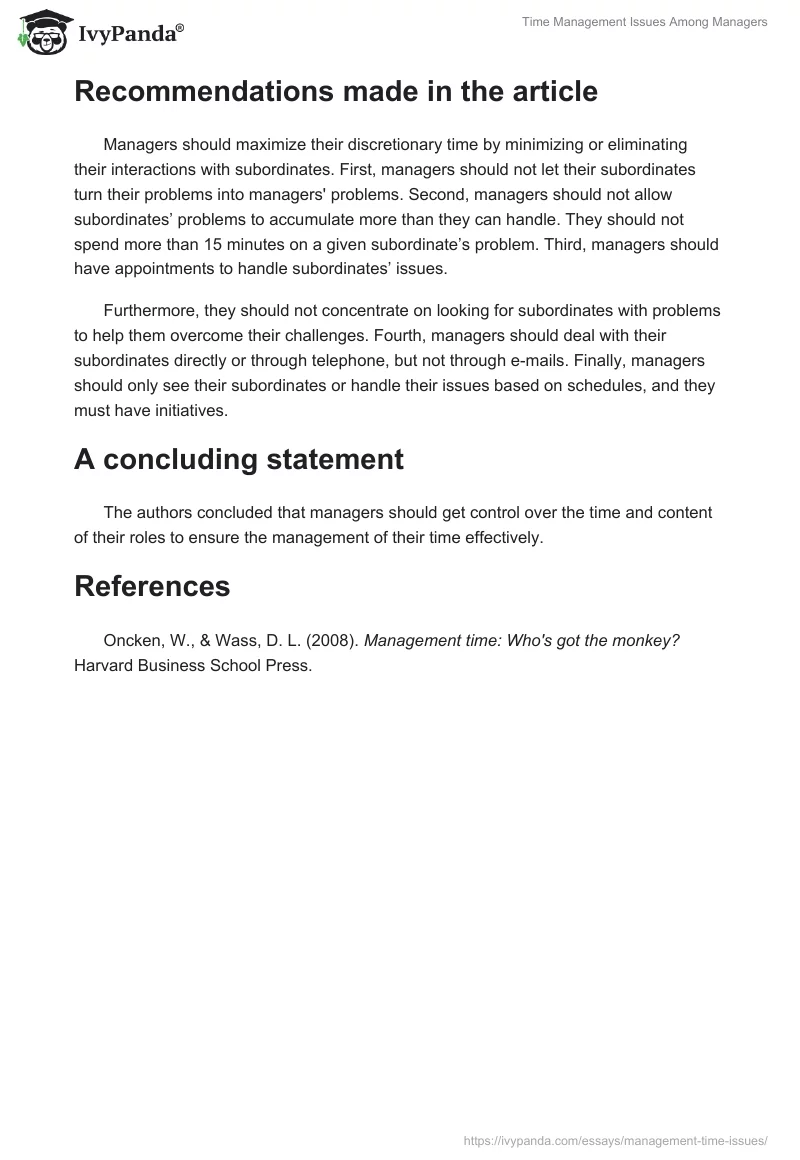What the author intended to do in the article
The purpose of this article was to explore the issue of management time among managers. On this note, the authors focused on the issue of the meaning of management time when viewed how managers interacted with their superiors, peers, colleagues, and subordinates. Specifically, the authors identified three principal types of management time, which included boss-imposed time, system-imposed time, and self-imposed time. Besides these types of management time, they also recognized the subordinate-imposed time and discretionary time.
To ensure that readers understood the intended message of the article, the authors used the monkey-on-the-back metaphor to explore how subordinate-imposed time affected managers and what they can do about it.
The most significant findings of the article
Managers always face demands from their superiors and subordinates, and these requirements could be time-consuming to the manager. Thus, to meet all these needs, managers must learn to control the timing and aspects of their roles.
Managers have discretionary time as a part of their self-imposed time. They should strive to create discretionary time by reducing or eliminating elements of subordinates’ demands. Consequently, managers will use the additional time well to manage system-imposed duties and boss-imposed roles.
A commentary by Stephen R. Covey emphasizes that an article by Bill Oncken remains the strongest indicator for managers to learn to delegate their roles.
Recommendations made in the article
Managers should maximize their discretionary time by minimizing or eliminating their interactions with subordinates. First, managers should not let their subordinates turn their problems into managers’ problems. Second, managers should not allow subordinates’ problems to accumulate more than they can handle. They should not spend more than 15 minutes on a given subordinate’s problem. Third, managers should have appointments to handle subordinates’ issues.
Furthermore, they should not concentrate on looking for subordinates with problems to help them overcome their challenges. Fourth, managers should deal with their subordinates directly or through telephone, but not through e-mails. Finally, managers should only see their subordinates or handle their issues based on schedules, and they must have initiatives.
A concluding statement
The authors concluded that managers should get control over the time and content of their roles to ensure the management of their time effectively.
References
Oncken, W., & Wass, D. L. (2008). Management time: Who’s got the monkey? Harvard Business School Press.


